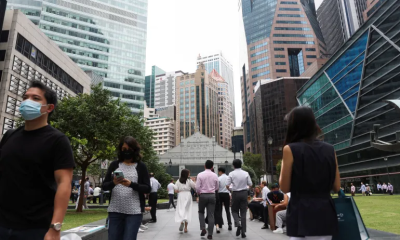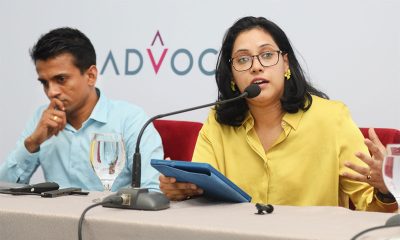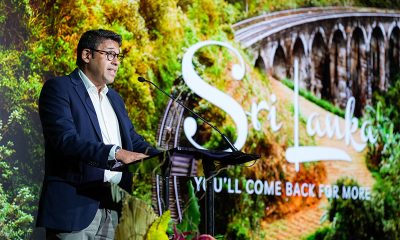Midweek Review
Let ethics precede religion
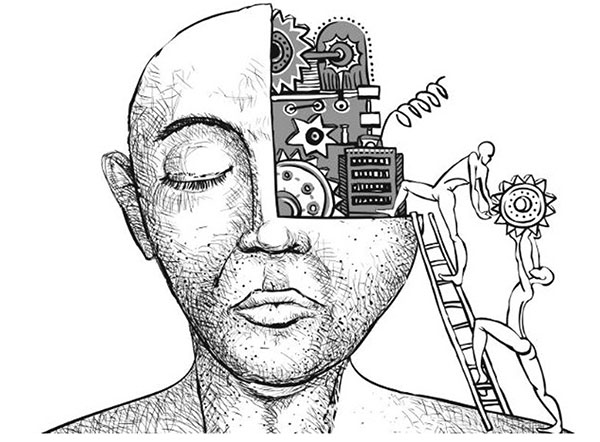
By Susantha Hewa
Conditioning is persuading people to believe something by repeated exposure to it and preventing them, as much as possible, from being acquainted with any conflicting views. No matter what it is meant to serve, it is an unwelcome process, which goes against all norms of education and civilisation. However, religious conditioning, for centuries, has been viewed as innocuous because it has acquired a semblance of sanctity by being associated with religion. This is a pity because, conditioning, no matter where it happens, produces the adverse result of making the learners mechanically accept what is drilled. No matter how great a religion may be, we are not making full advantage of it, if we continue to use indoctrination as the primary method of teaching it. Specially, it targets children who have no escape from or defence against this apparently edifying imposition.
There may be some who feel that religion and conditioning are inseparable and the former would lose all its meaning without the latter. However, this view begs the question of what constitutes religiosity. Of course, programming of children will continue to be the best method, if its objective is to make them devoted to the teachings of the respective religion as they grow up, regardless of the possibility of such programming unwittingly driving some of them to fanaticism as history would bear witness, sadly. So long as we use conditioning as the primary method of teaching religion, it is unrealistic to expect a different outcome.
Since all the religions in the world intend to guide people to become better individuals, there should be a concerted effort to prevent the diversity of religion from being a serious cause of division in society. After all, the ultimate purpose of religion should be to help people rise above their narrow religious identities and become unbiased, sensible and intelligently ethical. If religion, instead, push people more towards clinging on to dogma drilled in childhood than making them cultivate qualities that make the world a happier place for all, the whole enterprise becomes meaningless and, worse, counterproductive. As such the hoary method of premature conditioning of children merits a rethink.
If we are ready to view religion as something not necessarily connected to or reliant on conditioning, it would allow us to look for an alternative method of instruction that will enable the forming of ethical people without making room for them to be segregated on the basis of their acquired faiths. In fact, religion would be doing its best for humans if it gradually helped everyone to shed their religious scales and look for similarities rather than differences in others, which all religions advocate. After all, religions should be a liberating influence; not one which restricts.
To own that our long accustomed method of teaching religion has room for improvement is not being derogatory of religion at all. Religion and its mode of instruction are not tied by a sacred knot. Changing the method which tends to create separation is not to change the content enshrined in any religion. On the contrary, it is the first step towards preventing religion from inadvertently being divisive and insular. Unfortunately, in a world which admires and advocate innovativeness and creativity in every imaginable field, we seem to be complacent about the routine and unproductive method of drilling young minds by way of teaching religion.
Let’s think of education, which is one of the best civilising agents in any society. Education, over the years, has slowly and steadily progressed in terms of teaching methods. We have come a long way from using rote learning, drilling and all sorts of intimidation and punishment; instead, today we encourage group learning rather than individual learning, comprehension rather than memorising, questioning rather than passive reception, discussion rather than lecturing or doling out notes. As for the teacher, today, he or she acts as a facilitator rather than an all-knowing dispenser of knowledge. In other words, we have shifted from the parochial teacher-centred education to a more productive learner-centred education. Why should religious instruction remain in a rut? After all, religious tutoring, of all things, need not have even the remotest associations of stagnancy. It’s time we found alternative methods of religious instruction without making the mistake of thinking that shifting to a more fruitful method of teaching religion amounts to being disrespectful of religion in any way. Such dormancy defies every notion of progress. One’s regard for religion had better not prevent one from seeing the shortcomings of the ineffective method of conditioning.
Even if we had the ideal situation of a single-religion world, indoctrination of the unformed minds is hardly the best method of imparting religion. It is far more productive to replace conditioning with discussion, where the participants can fine-tune and broaden their knowledge. It had better be aimed at expanding horizons rather than mugging up content. Of course, the prerequisite for such a dynamic method is the avoidance of premature conditioning and let children develop their general learning faculties through normal education till they can deal with religious content.
If those who are anxious that stopping the religious moulding of the young would make them immoral, then, surely, moral philosophers, educationists and other concerned scholars may help develop a common subject of “ethics” without any religious tones. It would be introduced to students at a suitable grade tailoring the content to suit their level of cognition. Such a method would be much better than drilling immature minds, even if the world had only one religion. The benefits of it would be manifold in the present multi-religious world where conditioning has significantly contributed towards religion based alienation. Wouldn’t an unconditioned mind be better equipped to understand religion or religions without being obsessed with one of them?
Conditioning, for one thing, flouts all the sound principles of education. For another, it denies children the right to select their religion when they are mature enough to do so; it’s not different to partnering babies to their future spouses at the discretion of the parents. In fact, tradition has denied all of us the right of choosing our religion. Had we been left to choose our religion at the right time, our choice may have been different. More importantly, such a refined form of freedom would prevent us from being fanatics who would be ready to die or kill for our preferred religion. Choosing your religion as a mature person would put you on a completely different relationship with it than when it gets foisted on you when you were a toddler who could not say, “No please, not now. Don’t I have a choice in this matter?”
The word “religion” usually evokes feelings of serenity, brotherhood and peace in many people. However, this is not the case with its plural form “religions”, which connotes disquiet, division and strife. Unfortunately, we hardly find societies with a single religion. As far as religions are confined to textbooks they have no rivalry, but they do when unformed minds are programmed by them for want of a better method. Turning a blind eye on this and continuing to exploit children’s helplessness will not ensure the ushering of a peaceful and enlightened society. Can we, of all things, expect a method, which violates a basic right of children to produce good results?
Midweek Review
US Indo-Pacific strategy: Impact on bankrupt Sri Lanka
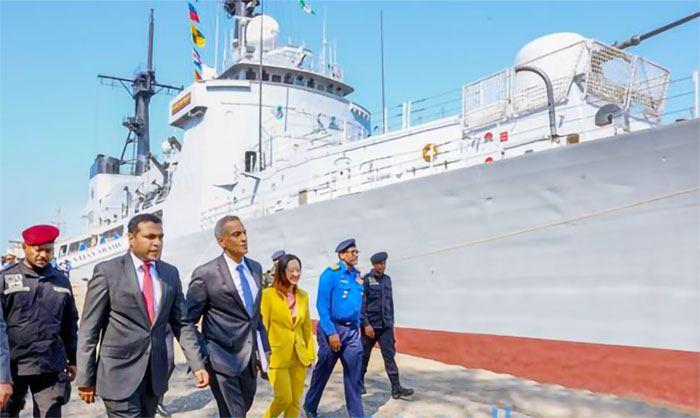
By Shamindra Ferdinando
The US has announced the transfer of decommissioned USCGC Decisive (WMEC 629) to Sri Lanka next year. The US Coast Guard decommissioned the 210-foot vessel after 55 years of service, at a ceremony at Naval Air Station Pensacola, on March 2, 2023. Sri Lanka is scheduled to take delivery of the vessel following necessary modernization to meet SLN’s operational requirements.
Navy headquarters, in a statement dated April 8, 2024, disclosed having preliminary talks with the US regarding the planned transfer of the vessel. According to that statement, the Chief of the Office of Defence Cooperation US Embassy in Colombo, Commander Sean Jin led the talks.
The transfer is likely to take place the year following the presidential poll,expected to be conducted in Sept/Oct this year.
The SLN statement underscored the growing US-Sri Lanka relationship ahead of the presidential polls later this year, and parliamentary polls next year.
Sri Lanka previously took delivery of USCGC Courageous in 2004 (commissioned as SLNS ‘Samudura’/P 621), USCGC Sherman in 2018 (Commissioned as SLNS ‘Gajabahu’ /P 626), and USCGC Douglas Munro in 2021 (Commissioned as SLNS ‘Vijayabahu’ /P 627).
USCGC decommissioned Courageous after 33 years of service whereas USCGC Sherman and USCGC Douglas Munro served the US for 50 and 49 years, respectively.
However, bankrupt Sri Lanka should be aware of the high cost of maintaining decommissioned vessels long past their service life, especially in terms of high fuel consumption. Besides, as pointed out by experts recently, when President Wickremesinghe wanted to deploy our naval assets in support of the US-led operation to protect shipping in the Red Sea, that they would be sitting ducks in this age of missile and drone warfare. It is no secret that Australia earlier paid both our Navy and Air Force for fuel to conduct operations in support of their efforts to block illegal migration, Down Under.
Still silent on Speaker’s declaration
In spite of a controversial travel ban imposed on Chief of Defence Staff (CDS) General Shavendra Silva and his family in Feb 2020, over unsubstantiated war crimes allegations, the US seemed to be keen on further improving relations with Sri Lanka in the wake of President Gotabaya Rajapaksa’s ouster in July 2022. At the time the US declared the travel ban, the celebrated General Officer Commanding (GOC) of Task Force 1/58 Division, which played a crucial role in the final phase of the war, also held the post of Army Commander.
In the wake of the May 09/10, 2022, violence that sent shock waves across the country, then President Gotabaya Rajapaksa replaced General Silva with Vikum Liyanage, promoted to Lt. General’s rank on June 1, 2022.
Regardless of continuing controversy over the US role in President Gotabaya Rajapaksa’s ouster, especially against the backdrop of Speaker Mahinda Yapa Abeywardena’s surprising but much belated declaration of direct external involvement in the violent protest campaign, President Ranil Wickremesinghe’s Office on April 10 divulged US National Security Advisor Jake Sullivan getting in touch with his counterpart here Sagala Ratnayake, the one-time Public Security Minister.
Obviously, the US move is in line with its much touted Indo-Pacific tilt. The US wants Sri Lanka to be part of its developing strategy. Did the US find President Gotabaya Rajapaksa a hindrance to its designs in the region, hence the decision to influence an unprecedented violent public protest campaign that forced the war-time Defence Secretary out of office?
The former President, in his recently launched ‘Conspiracy to oust me from Presidency’ discussed the possibility of how the US threatened action on the human rights front may have discouraged the military from taking tangible measures to neutralize the threat posed by the violent protest campaign.
But, the Wickremesinghe-Rajapaksa government appeared to have chosen to simply ignore Speaker Abeywardena’s confirmation of US involvement, as first disclosed by National Freedom Front (NFF) leader Wimal Weerawansa in late April 2023. A couple of months later, retired Navy Chief of Staff Rear Admiral Sarath Weerasekera, in his capacity as Chairman of the Sectoral Oversight Committee on National Security, confirmed lawmaker Weerawansa’s accusations.
The Bar Association’s pathetic failure to comment on the Speaker’s revelation should be examined against the backdrop of a spate of statements it issued during the public protest campaign and after, in support of those protests. In the wake of fresh controversy caused by former President Maithripala Sirisena regarding the Easter Sunday carnage, the Bar Association urged the former President to make, what it called, a full and honest ,disclosure of any sensitive information he possessed. Withholding such information, as a former head of state, would constitute a serious obstruction of justice,” the Bar Association warned.
Perhaps, the Bar Association should also reveal its stand on the Speaker’s declaration as it cannot be selective in addressing contentious issues.
Change of US strategy
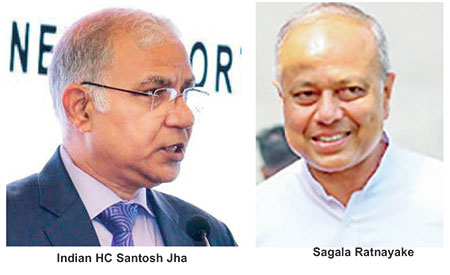 The US seems to have made up its mind to proceed with Wickremesinghe-led Sri Lanka though it appeared to have earlier envisaged an interim administration, under Speaker Abeywardena, sans the former.
The US seems to have made up its mind to proceed with Wickremesinghe-led Sri Lanka though it appeared to have earlier envisaged an interim administration, under Speaker Abeywardena, sans the former.
The Samagi Jana Balawegaya-led Opposition appears to have conveniently forgotten CIA Chief William Burns visit here in Feb 2023, a few weeks before MP Weerawansa alleged US Ambassador Julie Chung’s intervention with Speaker Abeywardena. The US mission in Colombo and the government didn’t confirm or deny the CIA Chief’s visit.
Similarly, there was not a hum from our JVP comrades when the CIA Chief made that clandestine visit to Colombo 14 months ago in the dead of the night after closing off the Colombo-Katunayake expressway to all other traffic. Have they clearly turned into Business suited capitalists now, easily globetrotting like nobody’s business, while the bulk of the masses they have vowed to represent are gasping for breath under these unprecedented economic difficulties? To this day the Sri Lankan public is in the dark as to who or what came in those two giant US aircraft that brought CIA Chief Burns and his equally secretive delegation to Colombo without a word from our government or from Washington DC other than a leak here and there. The JVP-led Jathika Jana Balawegaya, too, remains silent on US interventions here. The JVP has quietly improved its relations with the US over the past few years and now enjoys friendly relations with the Superpower. JVP leader Anura Kumara Dissanayake toured the US in late Oct/early Sept., 2023. AKD toured India in early January and Canada in late March, this year. Therefore, it is not too hard to understand the change in the JVP’s overall approach. Have comrades sold us out to the devil?
Lawmaker Weerasekera was snubbed by Washington by him being denied an opportunity to join chairpersons of 17 Oversight Committees chosen for a 10-day study tour of the US, organized by the National Democratic Institute (NDI) and USAID, in late Oct., 2023. Weerasekera, the former Navy Chief of Staff, retired in late 2006 after having served the Navy with an unblemished record for well over three decades. Obviously, the US found fault with MP Weerasekera for his comments critical of the US, especially in the aftermath of Gotabaya Rajapaksa’s ouster. The SLN veteran was one of the few who wanted to break up the growing protest campaign, while the West, in general, along with the NGOs they fund here, cunningly pleaded that they were peaceful protests and even called on the police and security forces not to use force against them.
Weerasekera quit on April 18, 2022, the day before Rambukkana erupted and at the time countrywide violence exploded on May 9, Prasanna Ranatunga served as Public Security Minister. Among several dozens of properties set ablaze in several parts of the country, were Ranatunga’s in the Gampaha district, the worst affected area.
US Ambassador Chung strongly and repeatedly discouraged the Gotabaya Rajapaksa government from appropriately responding to the growing protest campaign. However, UNP leader Ranil Wickremesinghe, having been elected President on July 20, 2022, by Parliament to complete the term of the ousted President Gotabaya, immediately directed the removal of those occupying the Presidential Secretariat and other government buildings. And mysteriously those who were threatening to lay down their lives for a system change simply melted away! What a staged drama?
No doubt if not for the swift action taken by President Wickremesinghe, the country could have suffered irreparable damage, with some waiting to stage a blood bath to erase Rajapaksas’ legacy. President Wickremesinghe’s action prompted some angry verbal reactions from the so-called international community to cover their nakedness and nothing more!
Similarly, the compromised Bar Association declared: “The use of the armed forces to suppress civilian protests on the very first day in office of the new President is despicable and will have serious consequences on our country’s social, economic and political stability.”
The European Union responded: “Freedom of expression proved essential to Sri Lanka’s current transition. Hard to see how severely restricting it can help in finding solutions to the current political and economic crises.”
US Ambassador Chung issued the following statement: “Deeply concerned about actions taken against protestors at Galle Face in the middle of the night. We urge restraint by authorities and immediate access to medical attention for those injured.”
The then British High Commissioner stated: “Very concerned about reports from the Galle Face protest site. We have made clear the importance of the right to peaceful protest.”
As President Wickremesinghe brought the situation under control, Ambassador Chung met the new Sri Lankan leader. Subsequently she tweeted Friday July 22 evening that she had expressed her grave concern over the “unnecessary and deeply troubling escalation of violence against protestors overnight”.
“The President and Cabinet have an opportunity and an obligation to respond to the calls of Sri Lankans for a better future,” the Ambassador said.
“This is not the time to crack down on citizens, but instead to look ahead at the immediate and tangible steps the government can take to regain the trust of the people, restore stability, and rebuild the economy,” she added.
Since then, the Wickremesinghe-Rajapaksa government hasn’t allowed public protests in Colombo. Almost every protest has been dealt with violently.
Amnesty International recently condemned the current government and police for using brute force to break up protests.
Santosh on expanded Indian role
Indian High Commissioner Santosh Jha explained how the Covid-19 epidemic and the ongoing Russia – Ukraine war paved the way for India to play a bigger role here.
Jha discussed the issue at a seminar on Defence Cooperation, with the theme “Identifying New Opportunities and Forging New Bonds” meant to promote Indian built defence equipment and explore avenues for collaboration in defence production. The event, on 10 April 2024, at Taj Samudra, attracted several Indian manufacturers. The Indian delegation was led by Anurag Bajpai, Additional Secretary (Defence Production), Ministry of Defence.
It would be pertinent to mention that Jha served at their Colombo mission during the 2007-2010 period when Sri Lanka brought the LTTE down to its knees on the banks of the Nanthikadal lagoon and then conducted the first post-war presidential poll.
Let me reproduce the relevant section. Jha said: “Like in other areas, we are cooperating closely on security and defence matters. Because of our geography, our security is interlinked and intertwined. And when we speak of security, we must remember that it has acquired a wider meaning than we have traditionally associated with it. After the pandemic and impact of the Russia-Ukraine conflict, it has come to include energy, health, food and even economic security.”
The first Defence Seminar cum Exhibition was conducted on June 07, 2023, at the same venue. The Indian role here today cannot be discussed without paying attention to the despicable Indian military intervention in Sri Lanka. Unfortunately, Sri Lanka lacked the strength at least to mention that fact even 15 years after the successful conclusion of the war, the country is yet to set the record straight at the Geneva-based United Nations Human Rights Council.
None of those demanding accountability on the part of bankrupt Sri Lanka for alleged atrocities committed during the last phase of the war and purported excesses after the conclusion of the conflict, dare to question Indian intervention. India cannot absolve itself of the responsibility for what its intervention caused here though Sri Lankan leaders seemed prepared to forget the sordid past.
The issue is whether Sri Lanka would have been in the current predicament if not for the Indian intervention at the behest of assassinated Premier Indira Gandhi, whose son Rajiv Gandhi, too, was assassinated on May 21, 1991 in the midst of an Indian general election. The Indian general election is scheduled to commence on April 19, on a staggered basis, and will end on Jun 01.
US-India combined strategy
The assassination of Congress leader and former Premier at Sriperumbudur, Tamil Nadu, 33 years ago, contributed to the gradual change of the political environment over the years, paving the way for Narendra Modi receiving premiership in May 2014. The incumbent Premier is widely expected to win a historic third term, though he is unlikely to make an impact in Tamil Nadu, regardless of his efforts to exploit the Katchatheevu issue for his advantage.
Interestingly, both Indian High Commissioner Jha and US National Security Advisor Sullivan reassured Sri Lanka on its security and wellbeing on the same day. Declaring that India’s defence exports today stood at nearly USD 2.6 billion, a ten-fold increase over the past five years, Jha urged Sri Lanka to take advantage of India’s increasing capabilities in the defence sector.
Sri Lankan Armed Forces operate a range of Indian defence equipment, including L-70 anti-aircraft guns, Indra radar, Offshore Patrol Vessels and Army training simulators. The Indian High Commission declared that India committed the supply of Floating Dock, Maritime Rescue Coordination Centre and Dornier aircraft which would ensure capacity building of Sri Lanka Armed Forces.
Regardless of the considerable increase in Indian weapons exports over the years, nuclear power remains one of the largest weapons importers. According to the Swedish think-tank, Stockholm International Peace Research Institute (SIPRI), India was the world’s biggest arms importer in 2019–23, with a 9.8 percent share of all arms imports in the world.
Over the past decade, India’s dependence on Soviet Union/Russia weapons has considerably decreased against the backdrop of New Delhi joining the US-led alliance grouped against China. Whatever Sri Lanka’s perceived stand, the US and India want Sri Lanka to be part of that grouping and work meticulously at every level to ensure Sri Lanka follows the Indo-Pacific strategy. After being aligned with the US, India, over the years, increased procurement of a range of weapons systems from Israel. According to SIPRI, over the past decade, India has imported USD 2.9 billion in military equipment from Israel. In the ’80s, India opposed Sri Lanka procuring defence equipment from Israel as it sponsored several separatist Tamil terrorist groups here. Now the China factor has brought the US and India together.
The US officially announced the planned transfer of the fourth cutter on Feb 23, this year. Deputy Secretary of State for Management and Resources Richard Rahul Verma made the announcement onboard SLNS Vijayabahu in the presence of Ambassador Chung and State Defence Minister Pramitha Bandara Tennakoon.
Both parents of Verma, who had served as US Ambassador in New Delhi, from 2014 to 2017, are Indian migrants to the US in the early ’60s. During his visit here, Verma checked out the site of the West Container Terminal (WCT), a deep-water shipping container terminal in the Port of Colombo. The WCT, currently being constructed by Colombo West International Terminal (CWIT) Private Limited, with $553 million in financing from the U.S. International Development Finance Corporation (DFC). CWIT consortium includes India’s largest port operator Adani Ports and SEZ Ltd, in addition to blue chip John Keells Holdings (JKH) and Sri Lanka Ports Authority (SLPA) having minority stakes in it.
Though there hadn’t been a previous instance of DFC investing here, the US government’s development finance institution has thrown its weight behind an Adani project meant to develop the CWIT on a Build, Operate and Transfer (BOT) basis for a period of 35 years.
According to a statement issued by Adani Ports and Special Economic Zone Limited (APSEZ) in the first week of Nov 2023, when commissioned, CWIT will be the largest and deepest container terminal in Sri Lanka. “With a quay of 1,400 m length and an alongside depth of 20 m, CWIT will be equipped to handle ultra large container vessels with capacities of 24,000 TEUs, “the statement said, asserting that the new terminal’s annual cargo handling capacity is likely to exceed 3.2 million TEUs.
Taking into consideration HC Jha’s declaration that security of India and Sri Lanka is ‘interlinked and intertwined,’ the same term can quite rightly describe the overall Indo-US strategy, though they are not on the same page regarding the Russia-Ukraine war. However, the Indian stand on Gaza genocide, perpetrated by Israel, indicates that New Delhi wouldn’t do anything to undermine its relations with the Jewish State.
Midweek Review
Between abstraction and empathy in Sarath Chandrajeewa’s visual paraphrases

by Dr. Santhushya Fernando,
Dr. Laleen Jayamanne and
Prof Sumathy Sivamohan
“Colour is the place where our brain and the universe meet.” Paul Cezanne
Dominic Sansoni’s recent black & white photograph of Sarath Chandrajeewa’s head (taken among his One Hundred Impressions in Bonze Gallery at his Atelier in Wennappuwa), appears to be cast in metal. Dominic has done the impossible by sculpting Sarath’s image into a bronze head with the lightest of energy, light itself. It’s this activity of transmutation of energy and metamorphosis (might we call this a process of abstraction?), that we want to talk about together here. We feel unable to easily discuss discursively, ‘abstract’ or ‘non-representational’ or ‘non-objective visual art’, which itself is the reason for wanting to write this so as to learn some. It’s not that we don’t sense and feel something in such an encounter, but rather that we don’t have an adequate conceptual vocabulary to transform aesthetic sensations and feelings into words and thoughts, which when it entails art is a very delicate, subtle process. We want to discuss Sarath’s recent exhibition at Barefoot Art Gallery, titled Visual Paraphrases (November 24 – December 10, 2023), with this in mind. We will approach human powers of sensuous abstraction, especially in art, by lightly touching on an evolutionary palaeo-anthropological perspective and glancing at prehistory with its archaeological finds such as microliths, tools, cave paintings, pottery and later bronze artefacts.
Pre-History: Palaeo-Anthropology
Andre Leroi-Gourhan the French Palaeontologist, in his highly specialised and yet accessible, celebrated book, Gesture and Speech, tracks the slow evolutionary drama of the interrelationship between the hand and the brain through the morphology of Homo Sapiens determined by bilateral-symmetry (of the right and left sides of the body). The hands freed from locomotion up on trees swung as humans walked upright barefoot. The freed hand led to the creation of tools (technology) and the larger more differentiated brain. According to this theory the brain didn’t lead evolution, the upright posture and the two feet in movement did, and as a result the prehensile hands freed of locomotion and the brain atop the vertical spine worked together. The Latin root for the word ‘Man’ is derive from ‘Manus’ which means ‘hand’ from which ‘Manual’ and several other species defining words are formed. The Sinhala Manushya and Tamil, Manithan, also derive from ‘Man’ belonging to the same Indo-European language group.
Leroi-Gourhan theorises that tool making and use were done in a sequence of actions which he links to speech. This process (at its most complex), created syntactical sequences of meaningful sounds; speech. The animal face with its snout and mouth were freed from the feeding function of foraging, relegated now to the hand, so that the human jaw, teeth, lips, tongue and mouth adjusted/evolved (with a supple larynx) to make articulated sounds, which in sequence became meaningful; language. Leroi-Gouhran says rather enigmatically that, ‘to speak is to speak softly’. We eat and speak from the same orifice. This truism is encoded in the saying that ‘words are food for thought’. Sometimes, when ashamed, we have to even ‘eat our words’, in English at least!
Leroi-Gourhan again on the long history of human cultural development with technology: “Whether the agrarian economy came in gradually, and whatever forms the transition may have taken in peripheral regions, the process that began in the Near East during the Mesolithic era towards 8,000, had by 5,000 BC completely transformed the structure of societies from Mesopotamia to Turkey, Greece, and Egypt. Even before the appearance of pottery between 6000 and 5000 B.C, the foundations for the new economy had been laid by the association of wheat and barley with sheep, goats, and pigs, and the first permanent villages had come into existence. Cultural variations were already considerable”.
The Artisan-Craftsmen of Lanka
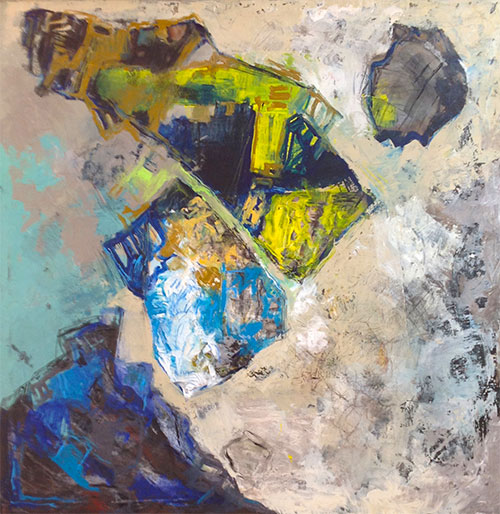
FALLEN MONUMENT
Sarath Chandrajeewa’s creative praxis broadly encompasses the three most ancient expressive plastic forms, Painting, Pottery and Bronze Sculpture. These three craft skills entailing specific, precise, sequential activities or ‘Gestures’ (in Leroi-Gourhans’ terminology), emerged slowly with their respective technologies and developed slowly into different art forms from paleolithic era (Stone Age) to ancient Bronze age civilizations. Therefore, to begin to understand the rigorous technical and conceptual training required and the manual processes involved in these crafts, over centuries, one is drawn to read up a little on archaeology, pre-history of art globally (Cave Art) and paleo-anthropology (fossil records). Doing so one glimpses deep evolutionary time before the separation of ‘The Arts’ from artisanal craft activity in the very recent early Modern era of the European Renaissance and then in industrial modernity. Sarath (whatever else he might be as a scholar, teacher, university administrator), appears to be in an ancient lineage of artisans, belonging to a ‘genus’ or specialised social group, a specific category of gifted, skilled, anonymous craftsmen that Lanka had had in plenty, once upon a time, but no longer. Ananda K. Coomaraswamy famously paid tribute to these anonymous craftsmen of Lanka in his visionary, hand-crafted book, Mediaeval Sinhalese Art (Campden: Gloucestershire, 1908). Here, it’s worth remembering that it took nearly sixty years for this unique book to be translated into Sinhala.
Within the history of Sri Lankan art Sarath Chandrajeewa is an anomaly. Traditionally, a Lankan potter would not have been able to cast in bronze, not because he had a ‘pottery head’, but because of belonging to a low caste in Sinhala-Buddhist society, though he might indeed have drawn on a pot or two, if he had time after his gruelling labour. Even now, after nearly a century of free education in the Fine Arts there are only a few bronze sculptors in the country. Ironically, Sarath had to go to Britain to study bonze casting from Tisse Ranasinghe at the Royal College of Art in London. Sculpture made by welding light metal like tin, which, for instance, Laki Senanayaka did so innovatively, is another skill altogether. A recent film honours his many exuberant talents.
Liquid Metal & Cinematography
We wonder if an imaginative soul, with a taste for interdisciplinary research and an understanding of film aesthetics might make a film on Sarath’s craft processes, skills and thought processes (at his unique Atelier in Wennappuwa, which is a foundry cum Gallery and school and living space, all in one), before it’s too late. Imagine how thrilling it would be to experience the fiery foundry where molten metal buckets are carried with iron prongs by Sarath and his several able-bodied young assistants wearing protective masks. The metal flowing like lava into moulds, matter (bronze), turning into spirit!
Plasticity of Clay & the Brain
Also, there are the terra cotta objects with the tactile clay to play with. Here, Mani Kauls’ film Mati Manas (Mind of Clay, India, 1985), may be drawn on, noting the value conferred by this modernist filmmaker on the craft of the anonymous, humble potters of perennial India. Note that he uses the word manas, mind, to denote the ‘plasticity of the brain’ itself, required for the crafting of clay objects. Then, take a deep breath, and compare it with the pathetic, derogatory term, Pottery-Head Dankotuwa coined by a well know academic/artists to put down Sarath’s combination of craft skill with deep historical scholarships.
Childhood Play Impulse
How Sarath instructs children as young as 5 or 6 to paint would itself be instructive for teachers of art to observe. It was Walter Benjamin who developed the ‘Proletariat Theatre Project for Children’ (with Azka Larkis), to learn how children played! He believed that bourgeoise education crushed children’s ‘Mimetic Faculty’, their innate capacity to create imaginative worlds through playing.
Hand Crafted Books
The pedagogic value of such a film for posterity would be quite considerable we think, as teachers ourselves. Besides, Sarath is also an educator who has a well thought out philosophy of education based on teaching, research and curriculum development for the Fine Arts, worth recording, at a time when the value of the Humanities is under siege in Lanka. In addition to designing and producing hand-crafted books of art scholarship at the imprint “Sri Lankan Arts and Crafts Association’, he has also assiduously and dispassionately chronicled both the violent and visionary institutional history of the University of Visual and Performing Arts where he was at first a student in the 70s and then a teacher, Professorial Dean and a Vice Chancellor until he was sacked from the last position by a ‘yaha palana’ presidential decree, ‘without cause’. These chronicles would be primary documents, should a historian of Lankan art become interested in formulating the baleful impact of Sinhala-Buddhist ideology on fine arts education policy, teaching and research.
We three academics, coming from three different intellectual disciplines (Medicine, English Literature, Theatre and Film Studies) worked along-side each other here, so as to understand this mysterious process of a ‘will to abstraction’ or non-objective art, evident in Sarath’s work. None of us are art historians but are learning on the run its diverse histories and theories relevant to our topic. Of the three of us, Santhushya and Sumathy have seen the exhibition, while Laleen has seen it telescopically, only on her computer and in the paper Catalogue to the exhibition, from Sydney. So, she believes that the other two friends and colleagues are her microscopic eyes. All of us know Sarath’s work (artistic and scholarly) to some degree, and have worked with him but Santhushya has known him intimately since childhood as well. Sumathy contributed a poem and a photograph of and a poem by her sister Rajani to the Jaffna Doors and Windows book, a collective multi-ethnic project conceived and produced by Sarath. Laleen however, though she has written on Sarath’s work, has never met him nor spoken with him or seen his work with her own eyes. But before the angel of death calls, she hopes to visit the Sri Lankan High Commission in Canberra to see his large figurative clay mural of folk traditions, celebrating our multi-ethnic Island home. It is a contribution to Australian culture too which has nourished several distinguished Lankan artists (Dharmasena and Milinda Pathiraja), and scholars (Michael Roberts, Neville Weerarathne, Anoma Pieris), and provided some with a hospitable home in an expansive multi-cultural ethos.
Art in the Brain; A Medical Perspective
Dr. Santhushya Fernando, who directs the innovative ‘Medical Humanities’ programme at the Colombo Medical College, says that the latest research in Neuro Science demonstrates how art activates complex cognitive processes by recruiting diverse brain regions. Due to the sensory dynamism of these processes, there is a great deal of ‘redundancy’ or excess in the operations of the Sensory-Motor system when we perceive art, she says. Here, excess of sensations (rather than purely functional efficiency), stimulates cognitive and affective processes in unpredictable ways. As such, that form of immediate, non-rational (not irrational), illumination we call ‘intuition’ is activated. Santhushya adds that, “recent neuroscience and behavioural studies done in relation to abstract art stimulate us to question why abstract art holds its appeal to the human mind. The research suggests that ‘Abstract Art’ appears to free our brain from the dominance of reality”. In so doing it derails our sensory-motor perceptual habits, enabling subtle sensations, of light and colour, say, “to flow within the brain’s inner processes”. These uncensored intuitive processes in turn “create new emotional and cognitive associations”. Artists, scientists and indeed mystics, have spoken eloquently of such profound intuitive experiences over centuries. Undoubtedly, Leroi-Gouhran is one such intuitive scientist.
Sarath, while sculpting his One Hundred Impressions in Bronze (1992), appears to have been immersed in this precarious, volatile zone of intuitive awareness. Santhushya has had the privilege recently of being sculpted and cast in Bronze by Sarath and has (unusually), written insightfully about her own experience of the process, what she felt. Her bronze head was placed in an adjacent space, separate from the Visual Paraphrases exhibition itself, which caught Sumathy’s eye and she wrote to Laleen about the quality or ‘impression’ captured there of Santhushya’s gaze. For myself, [SUMATHY] I looked at the eyes very carefully, for I had already been alerted to the way Sarath works on sculpting, starting with the eyes, or observing the eyes very carefully. When I heard this I was struck by how prescient this was; how truly distinctive. Not knowing anything about sculpting, I wondered whether this is how other sculptors worked. The eyes tell us not so much about the person herself as about where our gaze is directed. I have never met Santhusya in person, but gazing upon the sculpted figure, I thought of the bond between Sarath and the author of that person; two authors here. Two writers and two creators. Puzzling out and thinking about this bond between sculptor and subject intrigued me greatly. I had also seen Ivor Jennings’s statue that Sarath had made for the University of Peradeniya. What are his eyes like? But more importantly what does he gaze at? Similarly, Sarath’s One Hundred Impressions in Bronze has had this powerful centrifugal (not centripetal) force on those who have encountered this work (without prejudice), but with an open mind. His work is not narcissistically centred on himself and his subjectivity (whether radical or soulful), but rather, it radiates outward with an effulgence, connecting strangers in faraway places too. This is so true, Laleen. I wonder, by working in pottery and metal, common material, commercial material, and material of the everyday, if one becomes first an artisan and second an artist in the best senses of the terms.
(To be continued)
Midweek Review
‘Kiri Bath’ and Identity
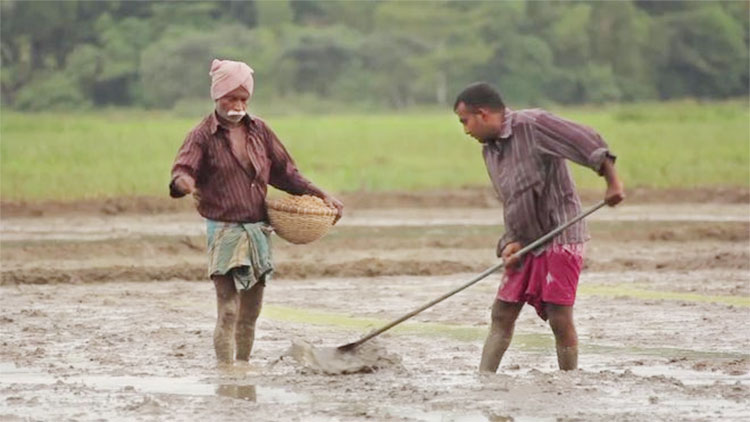
By Lynn Ockersz
The Golden Harvest is in,
And it’s time to rejoice,
Over the Sun’s free-giving,
But the denizens of the Isle,
Would do wise to see here,
A time for also uniting,
For, the tillers of the soil,
Whose priceless labours,
Make the ‘Kiri Bath’ bubble,
And spread joy all around,
Amid rising costs of ‘Kevili’,
Have no separate identities,
Save the badge of honour,
That comes from honest labour,
Expended in the paddy fields,
Of the land’s North and South.
-

 News5 days ago
News5 days agoSinhala and Tamil New Year auspicious times
-

 Business6 days ago
Business6 days agoThe $2bn dirty-money case that rocked Singapore
-

 Foreign News7 days ago
Foreign News7 days agoSingapore tightens rules for expat workers with an eye on local discontent
-

 Business2 days ago
Business2 days agoSOEs seen as failing SL’s ordinary citizens
-

 News3 days ago
News3 days agoSay no to NEPF! Say no to abolishing free education!
-

 News5 days ago
News5 days ago123rd Birth anniversary of Dr S A Wickramasinghe commemorated
-

 Business2 days ago
Business2 days agoSri Lanka Tourism concludes another round of Roadshows in Australia
-

 Foreign News6 days ago
Foreign News6 days agoNigeria first country to introduce ‘revolutionary’ meningitis vaccine
















